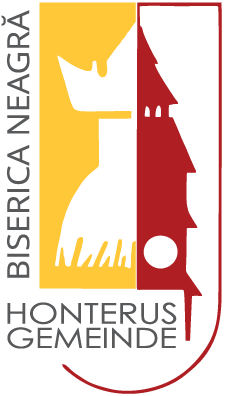The History of the Black Church
Whoever has visited Brașov knows that the Black Church is the city’s symbol. A simple look at the enormous building makes one’s heart and brain understand this fact. Its image is overwhelming and remains engraved into one’s soul forever. Newcomers to Brașov will certainly experience these emotions immediately on their arrival. This towering and impressive construction is a perpetual source of inspiration and joy, and its spiritual designation offers its visitors the feeling of warmth and closeness. Maybe this is why people do not feel small standing next to it, but rather protected and embraced as well as inspired by its greatness.
600 YEARS OF FAITH, BEAUTY AND INSPIRATION
For over six hundred years, the bells of the Black Church have been ringing each and every Sunday. Six hundred years of history, faith and beauty. Inside the church, the divine music of the organ, along with the warm voices of the people rise high beyond the vaults, bringing its ancient walls to life. The Black Church is the spiritual center of Brașov’s Saxon community, while simultaneously being the most important stage of the Transylvanian ecclesiastical reform and the cradle of humanistic culture for the whole region.
For the last 500 years our community has lived according to protestant values: freedom and cosmopolitanism, responsibility and education. Thus, we welcome people of other denominations and religions as well as non-believers with the same love that we hold for the people of our community. We act in accordance with the freedom of belief, in a highly responsible way towards all our brothers and sisters worldwide and towards God’s Creation. We strongly believe that education and science lead to communion, to a deeper understanding of the Creation and towards a fulfilling life.
You might ask yourself why such an imposing gothic church was erected in a valley surrounded by thick forests. History notes the fact that even before the arrival of the Teutonic knights in this area, a Catholic nunnery belonging to the Order of Prémontré existed on the grounds of the Black Church. The German settlement that grew around this place of worship was called Corona. The skills of the German settlers and the key privileges invested onto them by the Hungarian royalty, quickly transformed it into a prosperous town. It was only natural for the citizens to claim an appropriate ecclesiastic building that would reflect the beauty of the town and the piety of its inhabitants. At the end of the 14th century they began to raise the church.
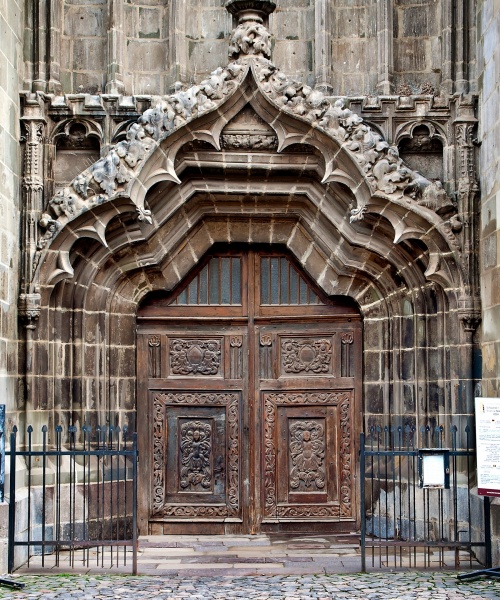
The western gate is one of the five gateways of the Black Church with the most sumptuous decorum. Most probably, it was constructed around the year 1450, together with the nave of the church and its towers, by a stonemasons’ lodge which had arrived in Brașov via Cluj and Sighișoara, coming all the way from Cassovia (Košice, nowadays in Slovakia).
The Gothic architectural style was the utmost ideal of new constructions, and due to the close commercial and handcraft relations between Brașov and the imperial city of Nürnberg, it was decided that the new church would be modelled after the magnificent Saint Sebaldus Church in Nürnberg. The construction of the Church took almost one hundred years.
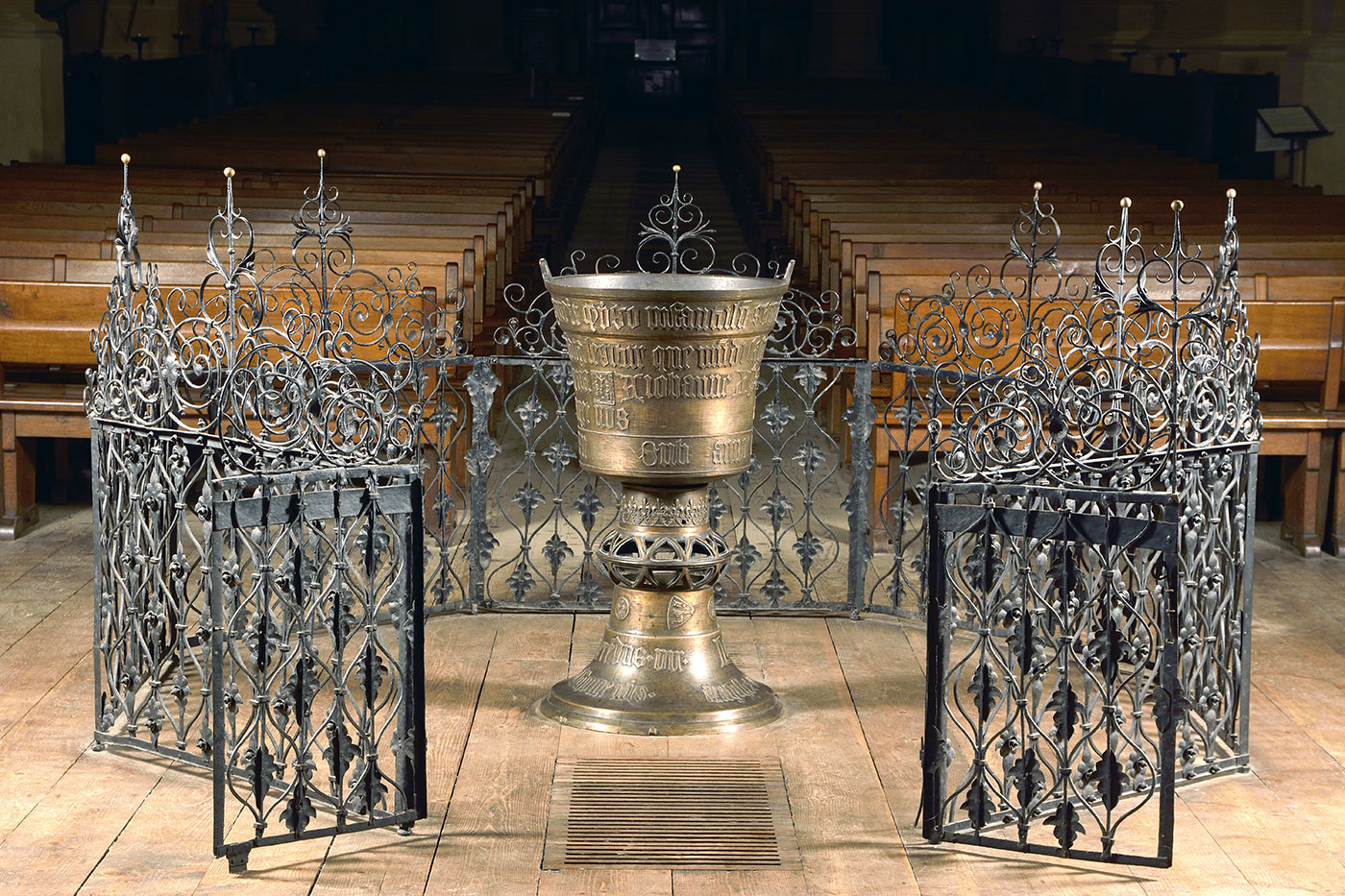
The bronze baptismal font dates back to 1472 and is still in use. Its shape, bearing a stem and vat, brings to mind a large gothic chalice decorated with symbolic inscriptions and inserts.
In those times, the Christian community was of Roman-Catholic denomination. The numerous travelers and foreign traders arriving home from Brașov brought with them the news of the church’s construction, and the Popes sent significant support for the glory of Catholicism in the region.
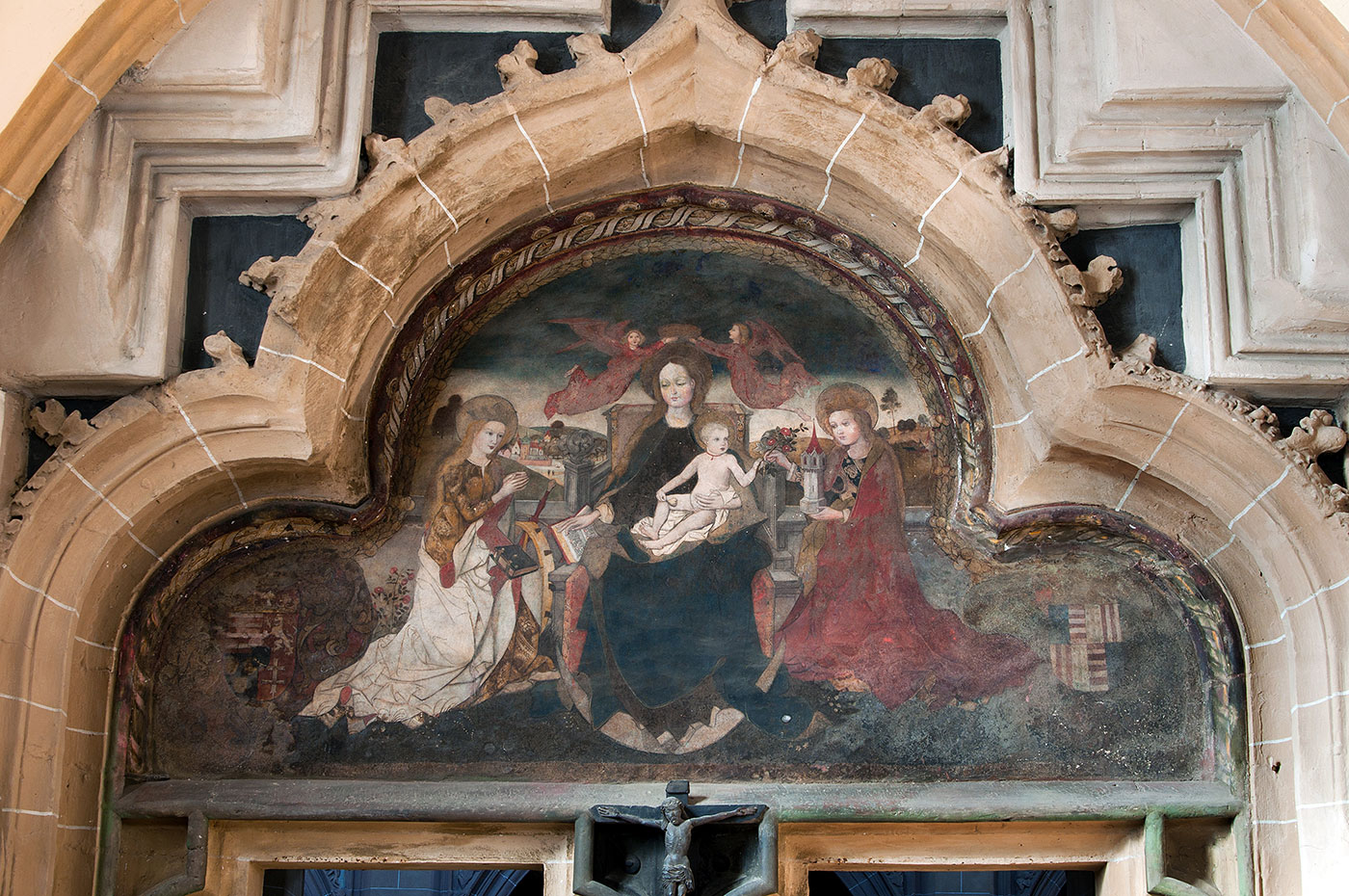
This mural placed in the tympanum of the south-eastern gate was painted between 1476 and 1490. At the center of the image one recognizes the Virgin Mary on a throne, holding the Infant Jesus in her arms. She is accompanied by Saint Catherine of Alexandria and Saint Barbara. In the lower corners of the mural one can observe the coat of arms of King Matthias Corvinus and his wife, Beatrice of Aragon.
At the end of the Middle Ages, an increasing number of people from all across Europe strove for the renewal of the Roman Catholic Church. The Saxon population of Brașov joined this movement and decided to follow the Reformation started by Martin Luther in Germany. The town at the foothill of the Tâmpa mountain had always been characterized by its particular spiritual openness. The parish church, which later was called the “Black Church” , became one of the most important stages of the Transylvanian ecclesiastical reform.
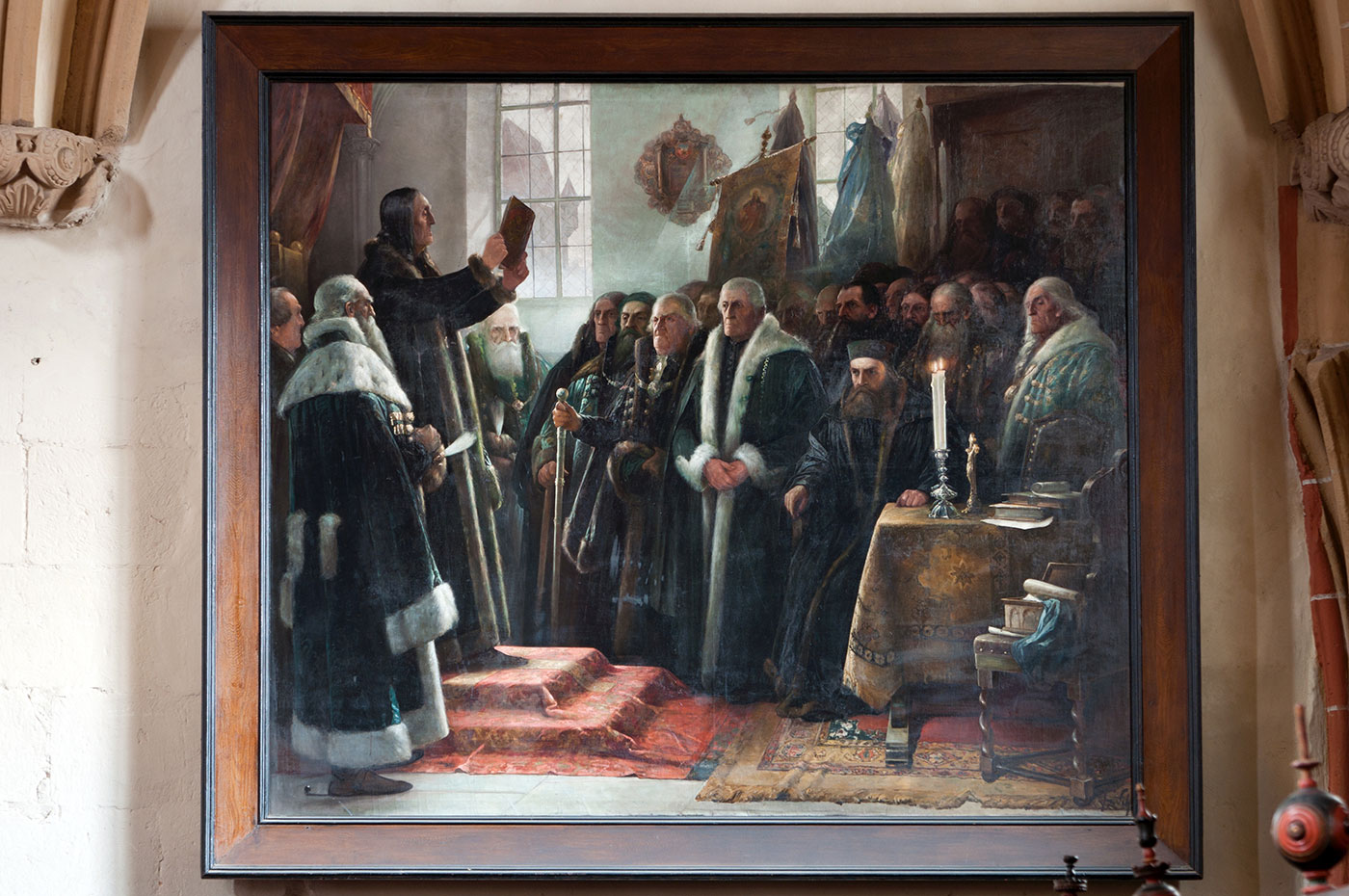
The mayor of Brașov, Johannes Fuchs, reads the “Book of Reformation” in the presence of members of the Council and of Johannes Honterus, who had compiled the book during the transition from Catholicism to Protestantism. Fritz Schullerus painted the scene in 1898..
In October 1542, the Church was the site of the first Lutheran service in Transylvania. At the initiative of the town council, Johannes Honterus, a significant humanist in Brașov, compiled the so-called “Book of Reformation”, which became the cornerstone for the adoption of the Protestant Belief by the Saxons in Transylvania.
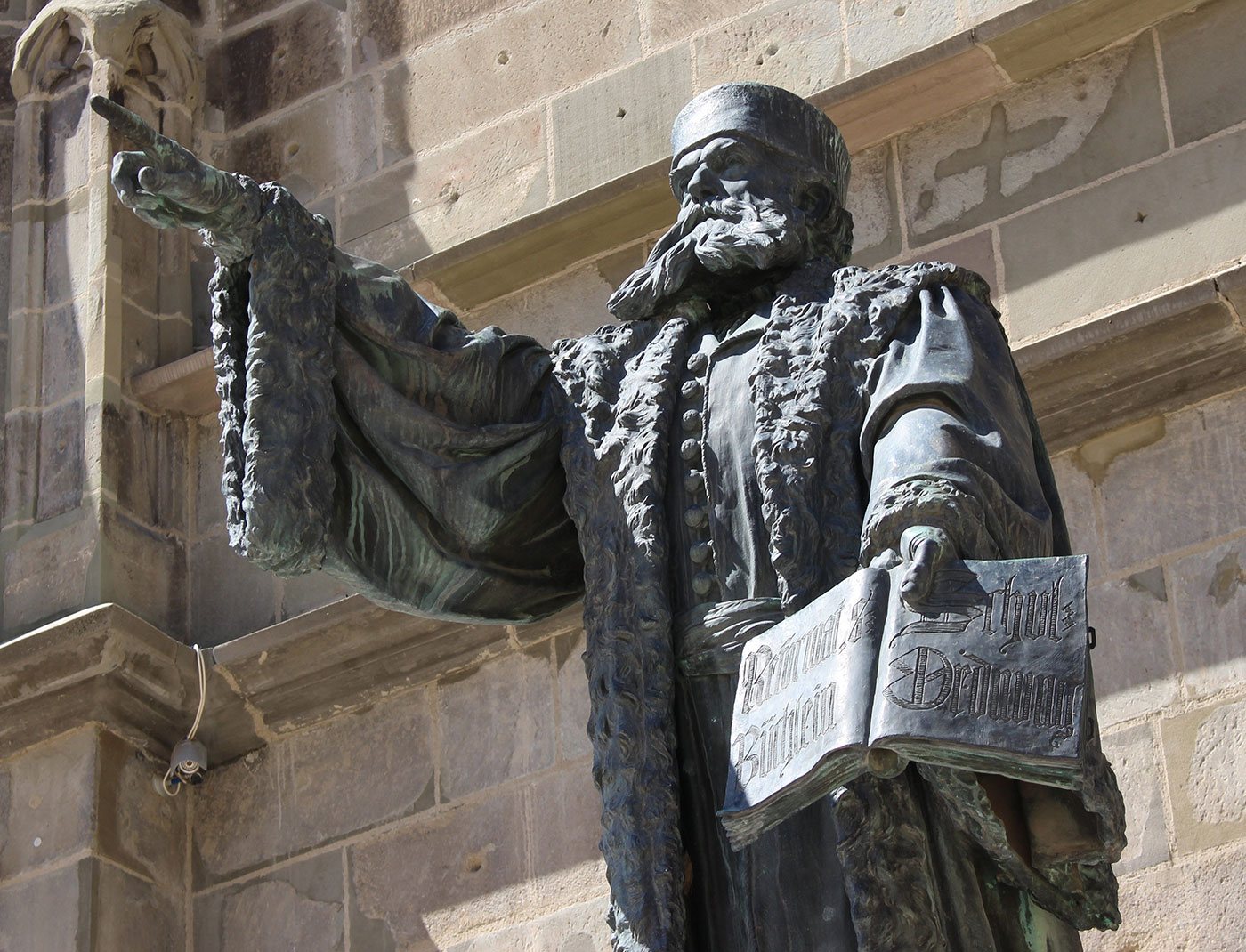
Johannes Honterus (1498-1549) was a humanist, a reformer, the founder of a school and printing press and a decisive factor in the introduction of the ecclesiastical reform in Brașov and in all the Saxon settlements in Transylvania. The monument celebrating his life was erected in 1898, on the eve of the 500th anniversary of his birth, and was created by the artist Harro Magnussen in Berlin.
Thus, Saint Mary’s Church in Brasov turned into a Protestant parish church. It became customary for the entire community to solemnly take part at the religious service, from the beginning to the end. Due to this tradition, the interior of the church was fitted with pewages and benches.
In April 1689, a devastating blaze destroyed significant parts of the town, and also damaged the parish church to a high extend. Its gigantic roofing caught fire and collapsed, burying the interior under a heavy blanket of rubble and ash. Legend says that the flames and smoke turned its walls so black, that the colloquial name of the Church became The Black Church. Its reconstruction began immediately and lasted for almost one hundred years. The first step was the construction of a new roof with the height of a fourstorey building.
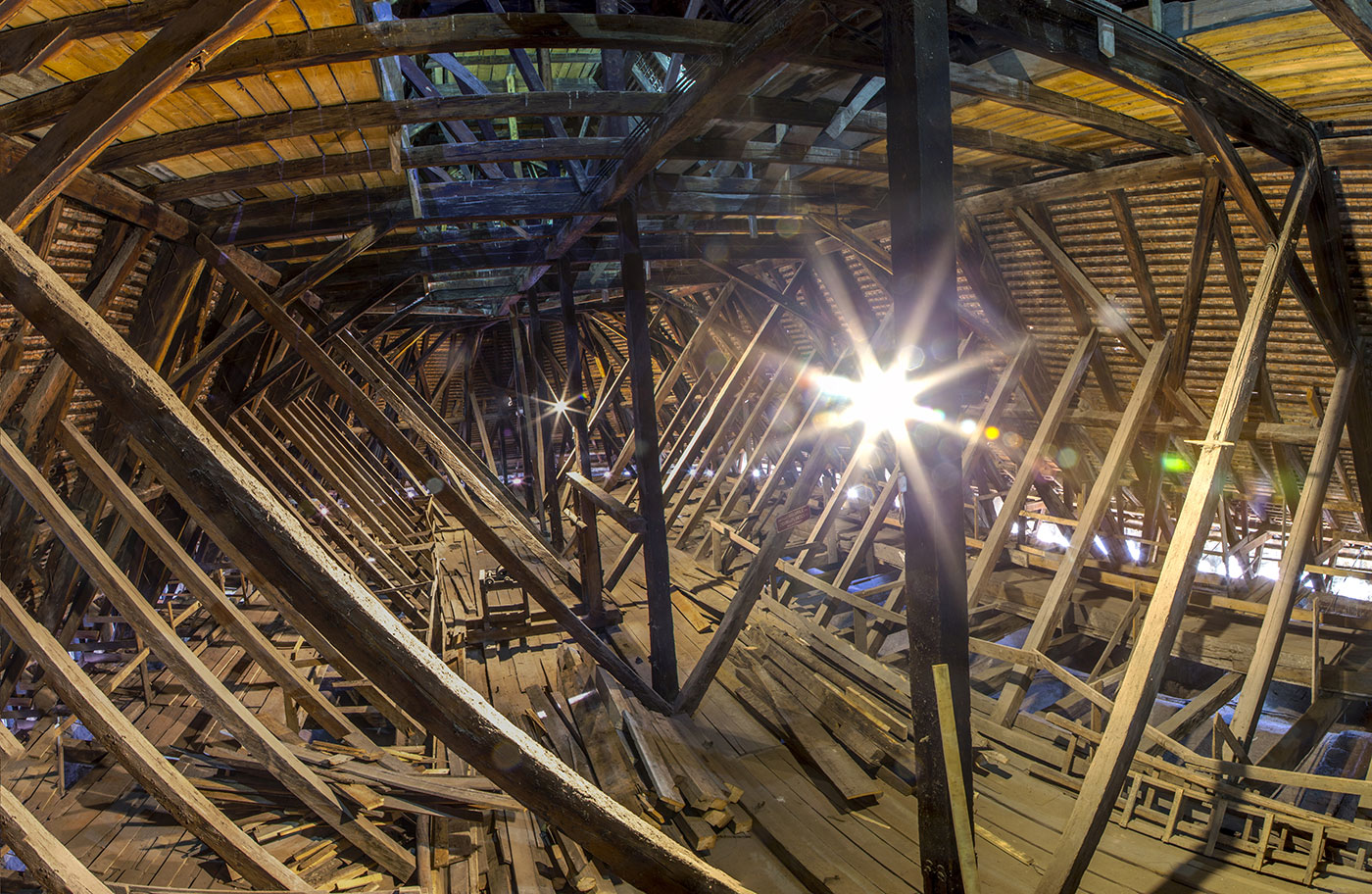
Later on, the Church was fitted with a new altar and a new organ. Even more, the new pewages that served the Town Council, the teachers and guild masters were placed around the pulpit, since this was the site where the priest spread the Word of God.
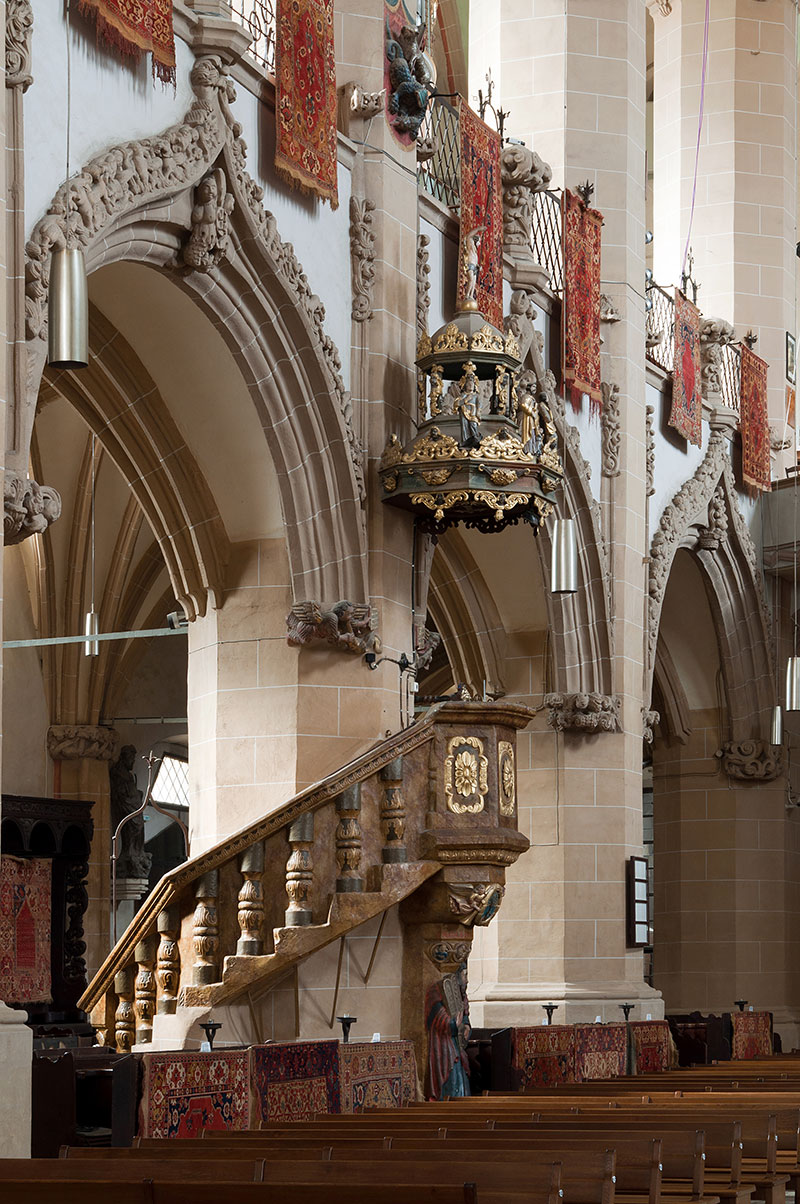
The pulpit was crafted in 1665, six years after the Great Fire of Brașov. It was donated to the church by the master butcher Lorenz Bömches. From here, the priest addresses the parishioners, illuminating the Word of God to them. The numerous representations sculpted into the pulpit formulate an allegorical message.
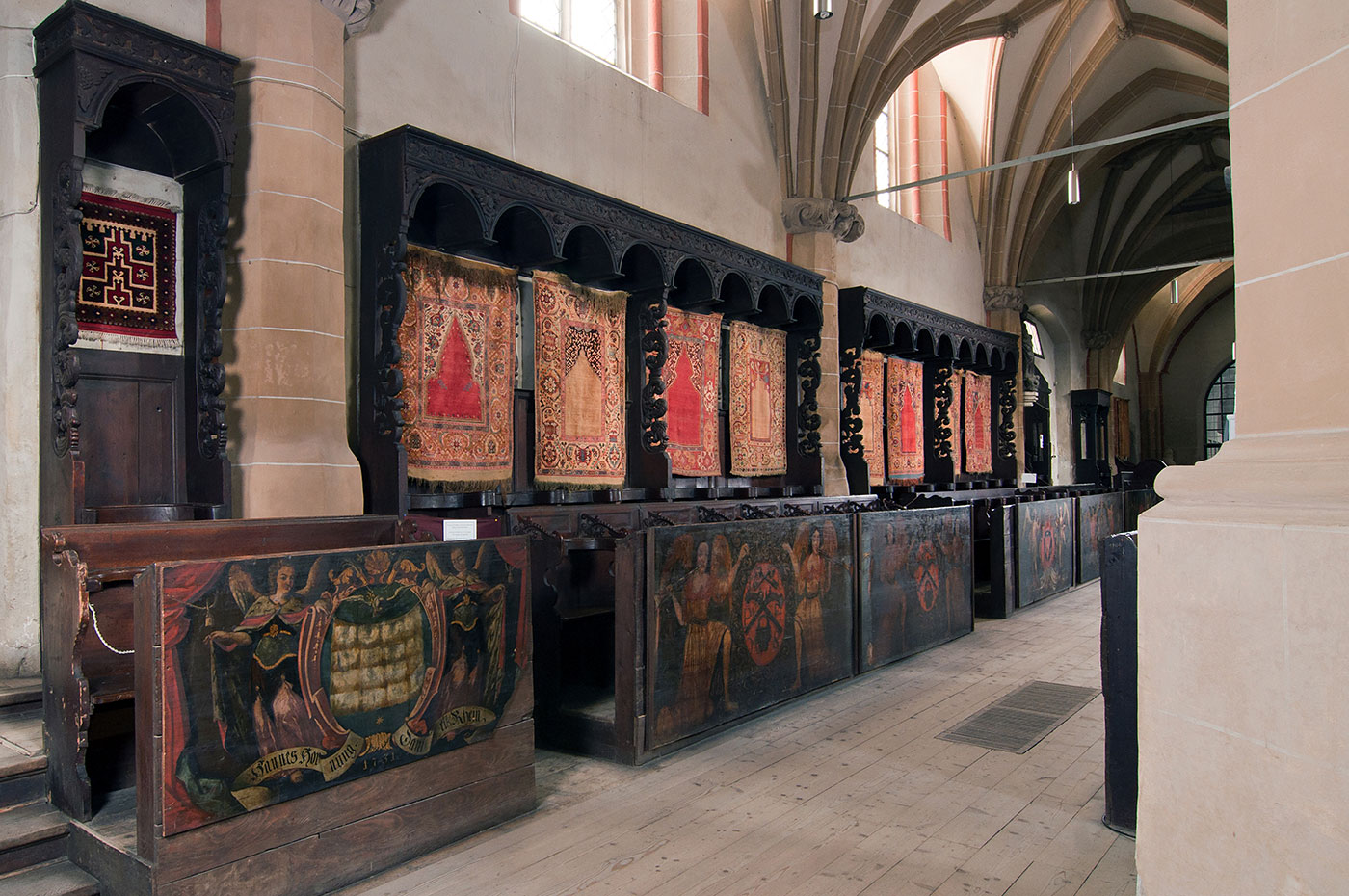
The guilds of Brașov produced goods intended for commerce. Their work created the basis for much of the town’s prosperity. Pewages such as these were used to seat the guild masters during the religious services.
As the community had significantly grown in terms of population, it needed more space. Therefore, two stone tribunes were constructed in the side aisles, where the craft journeymen were mostly seated.

The benches in the central nave date to the 1930s and have reversible recliners
The reconstruction lasted for almost a century and was an event in which the entire community participated, each in their own way. All of the furnishings and religious objects were donations and gifts of the parishioners. Each of them contributed to the redevelopment of the Church to the extent of their own means. As a final step, the people of Brașov invited an Austrian builder who could reconstruct the impressive vault placed above the church’s nave.

In order to decorate the church, wealthy parishioners and guild masters donated lively coloured Ottoman textiles, mainly rugs. Created in Anatolia and brought to Brașov via trade, they were purchased by the townspeople to decorate the altar, the pulpit and the pewages.
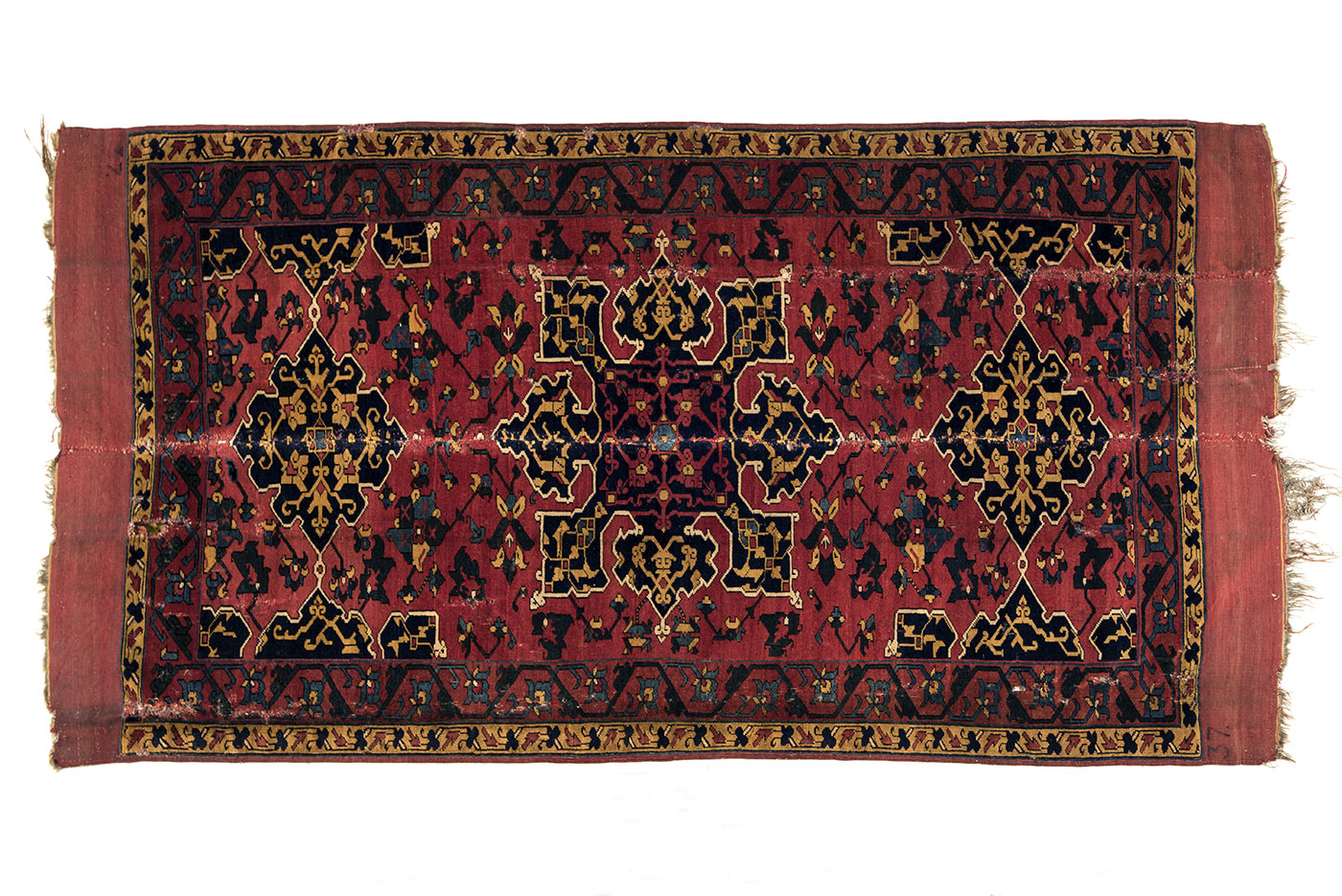
The Ottoman rugs were brought to the church in the 17th and 18th century at the latest, as pious donations of individuals or the guilds. Nowadays, the rich collection of the church contains around two hundred objects.
After the finalization of the major reconstruction works during the 18th century, the community focused on the optimal development of its religious rituals. Music had always been a central element of prayer. When the organ constructed after the Great Fire started deteriorating and proved to be too small for such an enormous building, Carl August Buchholz, a master craftsman from Berlin, specialized in the construction of organs, built a new, unique instrument for the Church, which today is the largest mechanical church organ in Romania.
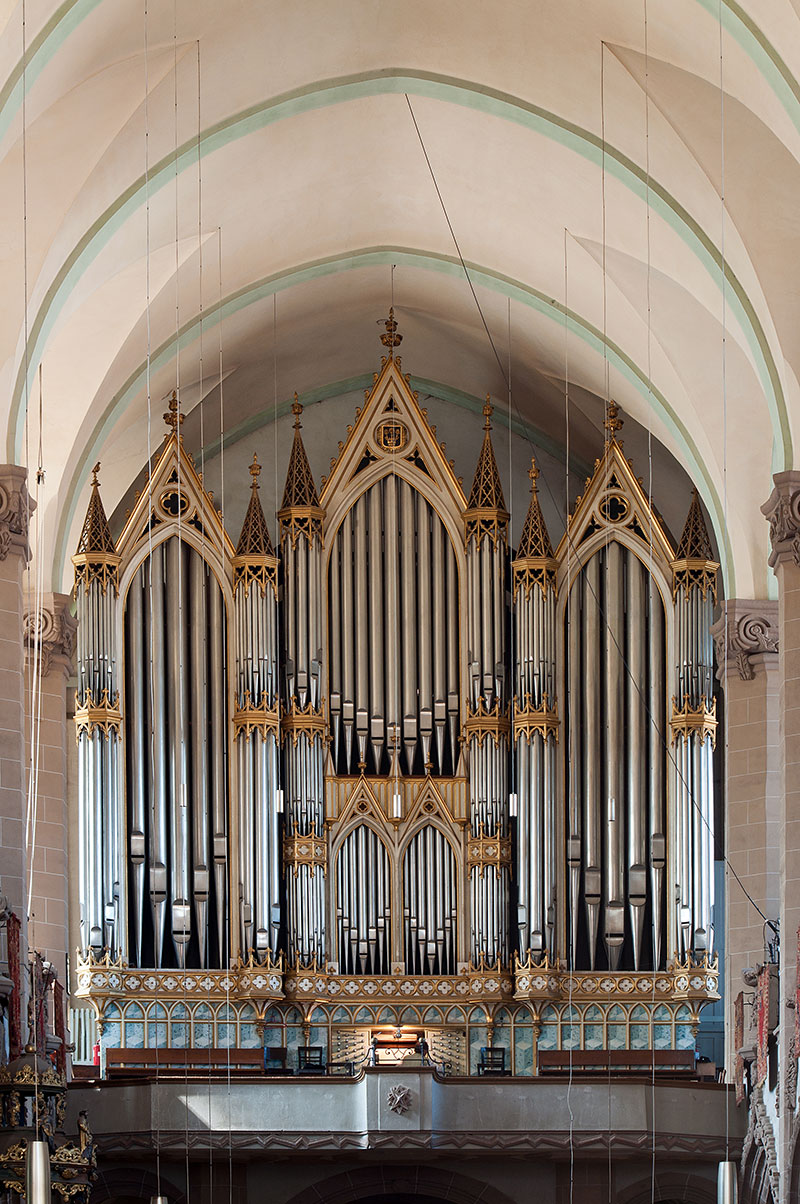
It took Carl August Buchholz four years – 1836-1839 – to construct und install the grand Organ with its 3993 pipes, 4 keyboards, with 56 keys each, and a pedalboard with 27 knobs and 63 acoustic registers. Today, it is considered the biggest mechanical organ in Romania
A few years later, the community installed a new altar in the church, being seventeen meters tall, along with new bells that have set the heartbeat of the city to this very day.
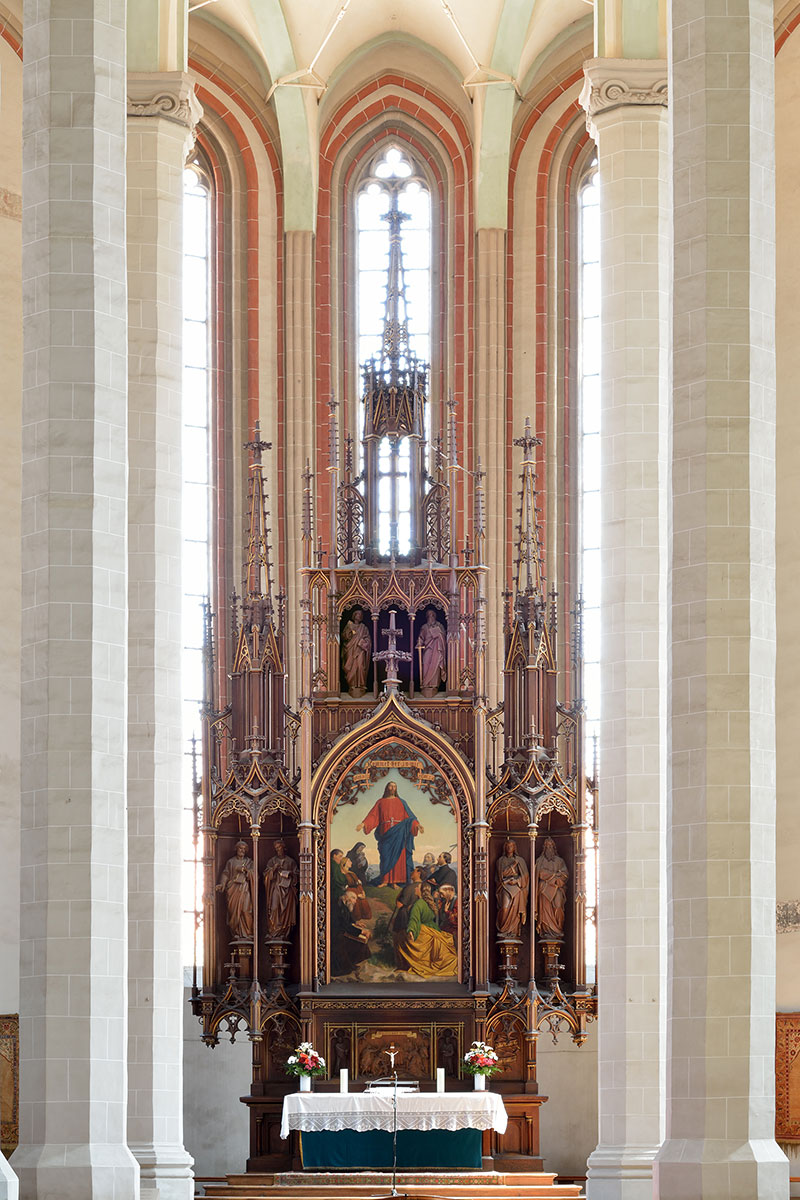
The altar is 17 meters tall and was constructed in 1866, in the spirit of German Romanticism. Its central painting depicts Christ during a sermon. Six surrounding statues show the four evangelists, as well as the Apostles Peter and Paul.
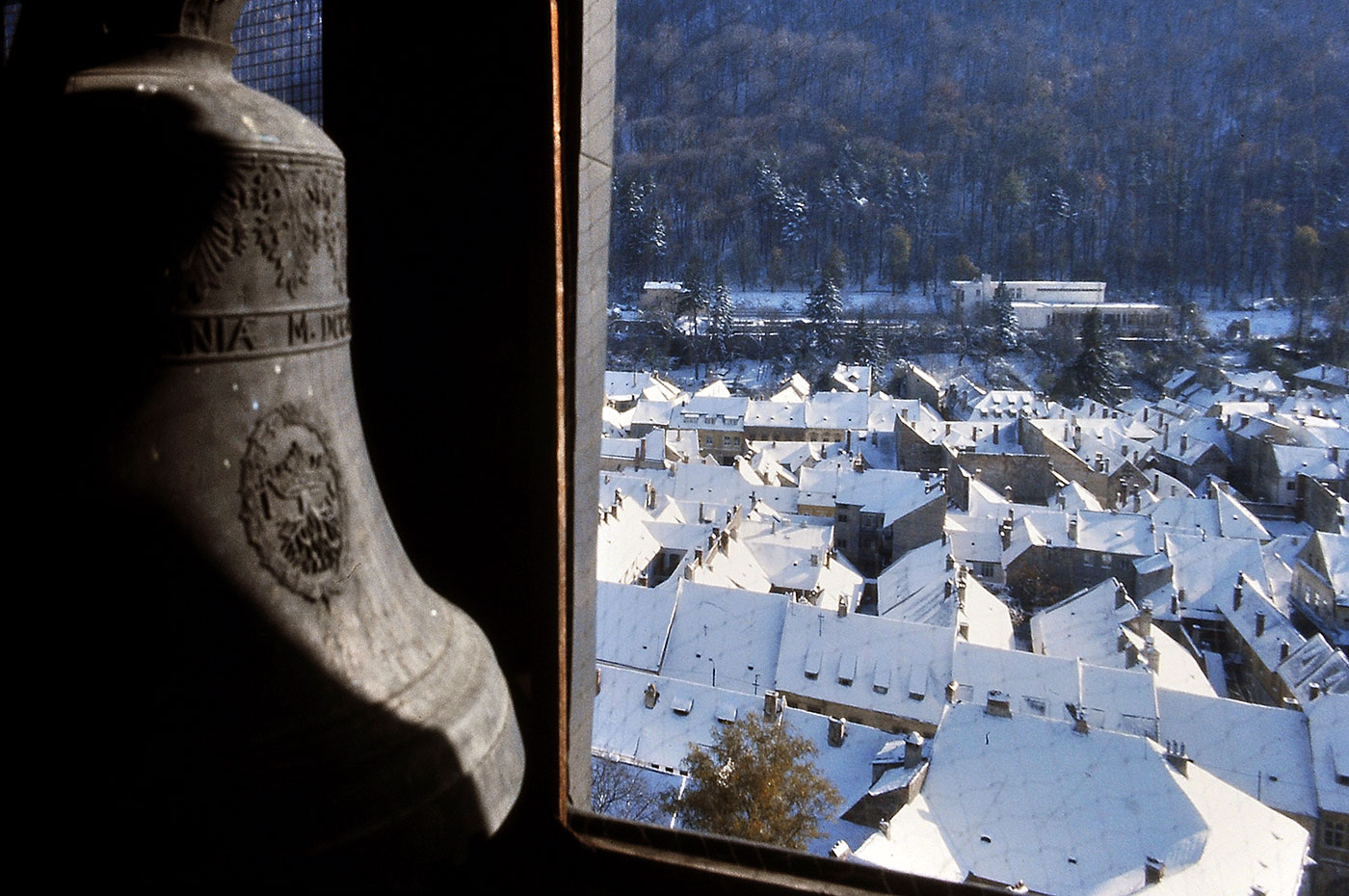
However, the advanced age of the church became noticeable at the beginning of the 20th century, when large restoration campaigns were prepared. Despite the hardships plaguing Brașov and the community of the Black Church in the 20th century, the restoration of the edifice was brought to a temporary end. Along with this achievement, the church was connected to the electrical power grid and a heating system was installed, which initially ran on wood and coal and later on natural gas. Between 1981 and 1991, the interior of the church – now warm and luminous – was reconditioned.
Nowadays, the Black Church’s collection reunites numerous and unique
objects of art of universal value, spanning along six centuries and over two continents. Each is simultaneously a messenger and an enigma, inviting visitors to discover and unravel them.





